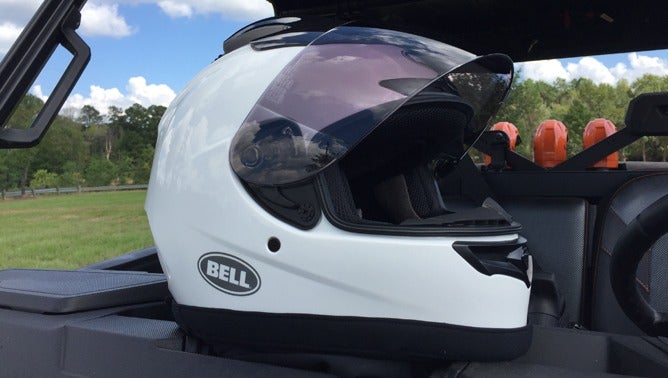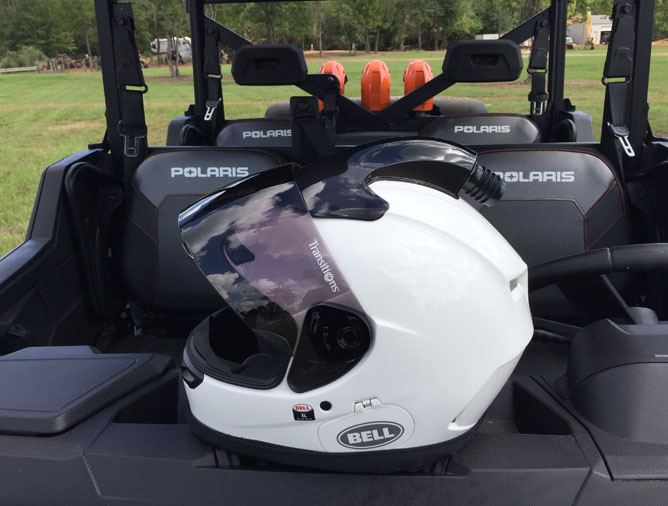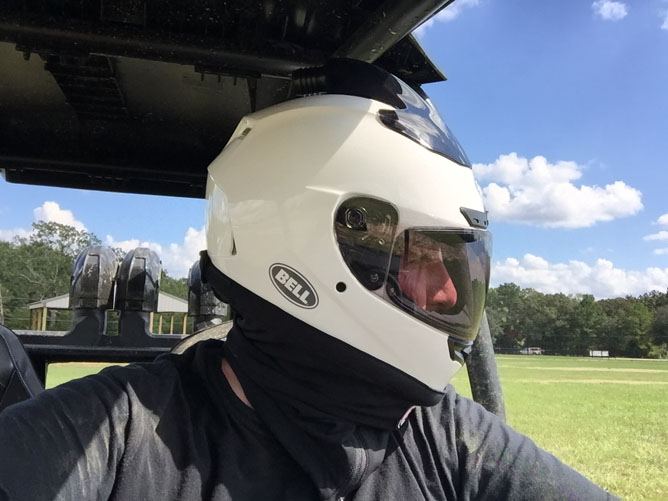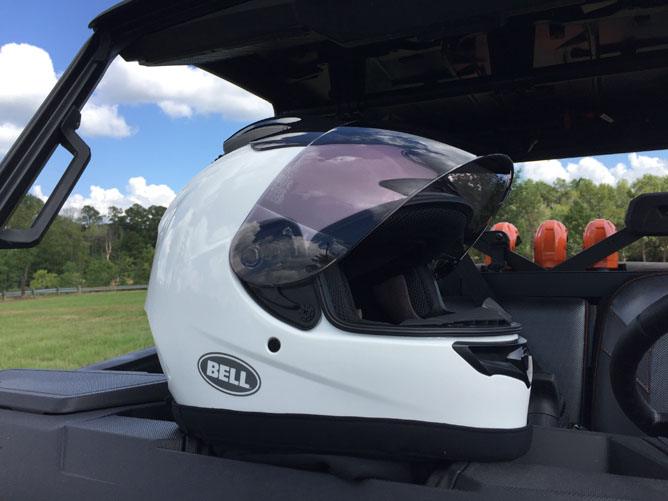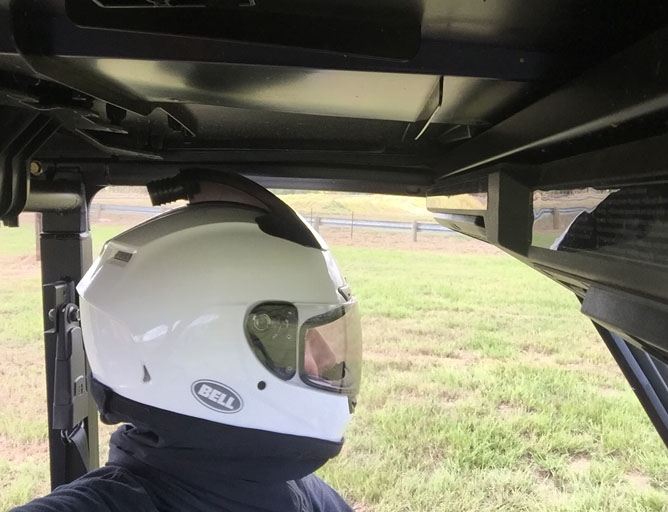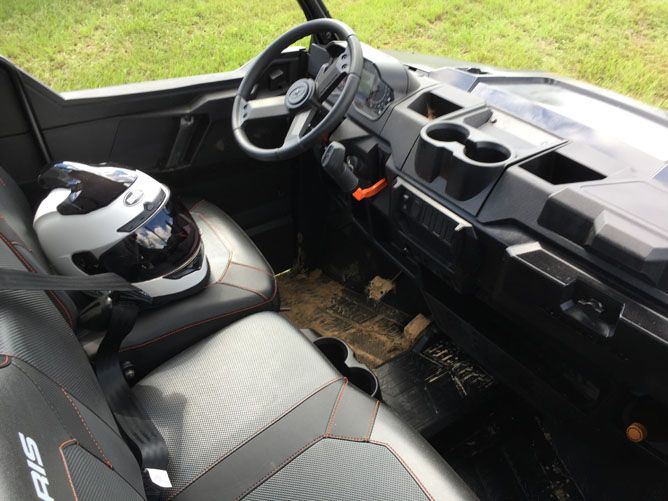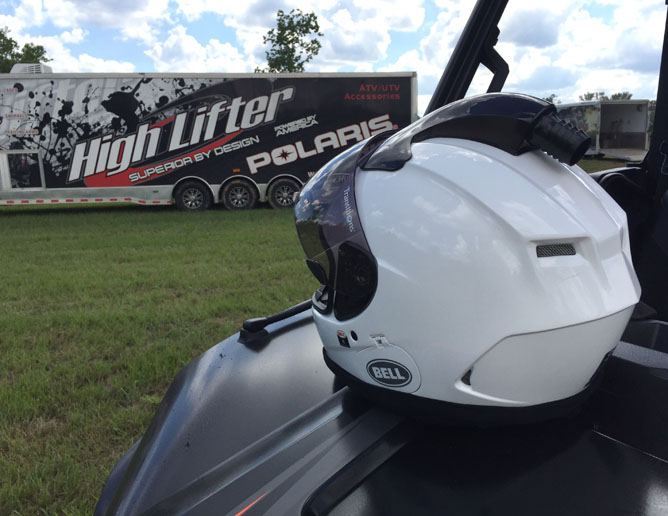Seeking to grab a piece of UTV action, Bell Helmets decided to build a lid crafted specifically for UTV riders. We recently took one along during a day of wheeling at the Polaris High Lifter Proving Grounds in Louisiana. Drawing on its extensive experience in the helmet industry, the Bell Qualifier DLX and the regular Qualifer are the brand’s first helmets designed, developed, and tested specifically for recreational UTV enthusiasts.
With some top off-road racers already using Bell helmets, the company wanted to create UTV offerings that everyday drivers and passengers could use for work and play.
Customers should know there are two primary differences between the Qualifier and its upscale DLX brother. Both are full-faced but the snazzier lid comes standard with a Transitions shield, tech that offers clarity in low-light conditions but quickly darkens in brighter conditions. Fancy DLX models also feature a communications port and speaker pockets where riders will be able to connect their Bluetooth devices. Beyond those two distinctions, both helmets are very similar. We tested a DLX unit.
Shop for the Qualifier DLX Forced Air Helmet
Atop the helmet is a forced air inlet that looks like someone left their bendy Slurpee straw behind after a trip to the 7-Eleven. Made popular by desert racers and the dust pumpers in their high-dollar lids, this bit of tech is possibly the best innovation to grace the powersports world since, well, the invention of the helmet itself.
Designed to introduce clean air into the helmet, Bell’s design also directs a cool breeze onto the top of the wearer’s noggin. Working exactly as promised, your author enjoyed fresh atmosphere even during a high speed run over dusty two-tracks where we alternated between a Polaris RZR and Ranger XP 1000 at their High Lifter proving grounds. Combined with an anti-fog visor, all-day riding would be a breeze in this lid – pun intended. There was plenty of clearance above the forced-air unit in our roofed RZR, even for this guy who measure 6’6″ in his size 13 stocking feet.
Speaking of visors, the Transitions unit on the Bell Qualifier DLX is absolutely worth the extra cash. That is not a statement I planned on making when donning the helmet for the first time, as your jaded author thought the unit would simply be a gimmick. Not so.
Even in the relentless Louisiana late-summer sun, this rider wanted not for a pair of sunglasses nor did he once wish for cloudy skies. Quickly fading to dark in direct sunlight and readjusting to clear in the shade, this visor is a must-have for folks who will be wheeling in bright conditions. The visor has a small, protruding tab on its leading edge making it easy to raise and lower. While not included on the base-model Qualifier Forced Air, the lower-priced lid is also compatible with the Transitions shield.
Both helmets feature a premium dust skirt, designed to keep debris outside where it belongs instead of all up in yer face. It definitely works as advertised and, as an unintended benefit, should help keep in heat on colder days.
The padding inside the Bell Qualifier DLX is well shaped, featuring contoured cheek pads so you don’t look like a squirrel while wearing the thing. The chin strap is also very nicely padded. The absence of this feature on other helmets is a detail one often does not think about until two hours into a ride when it suddenly feels like there’s a knife pressed against your chin. Long-time riders will know exactly what I’m talking about. That is not the case at all with this unit, as the chin strap is more generously padded than your hockey coach’s gut.
Fancy-pants DLX models such as our test unit also feature a communications port and speaker pockets where riders will be able to connect their Bluetooth devices. Bell has also smartly partnered with Rugged Radio to build a “Rugged Ready” version of the DLX prewired with Rugged’s intercom system.
Here’s a fun fact: the shape of the Bell Qualifier DLX Forced Air is such that it fits neatly into the overhead storage bins of even tiny commuter airplanes. Not a single TSA agent batted an eye as the helmet was carried through security, by the way. Top tip: stuff it full of socks or shirts to free up space in your other luggage.
For quick reference, side-by-side owners considering one of these helmets should know the main differences between the standard and DLX lids are simply the Transitions shield and better communications prep on the Bell Qualifier DLX. Both are available ranging in sizes from S to XXL and are offered in either white or matte black. The cheaper helmet is priced at $179.95 while its more expensive brother will dent your wallet for $319.95. The five-year warranty is a bonus.
Our Final Verdict
Our verdict? This is a very comfortable helmet that neatly mimics some of the high-buck tech being deployed by Baja racers. Splurge and invest in the DLX, if for the Transitions lens alone.
We are committed to finding, researching, and recommending the best products. We earn commissions from purchases you make using the retail links in our product reviews. Learn more about how this works.
